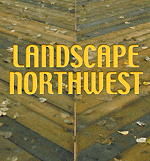
Surveys
DJC.COM
April 19, 2001
Seattle Chinese Garden: a people place
Seattle Chinese Garden Society
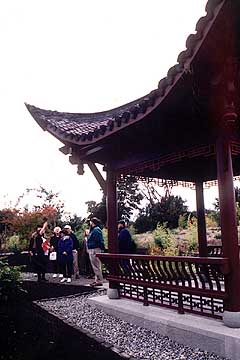
|
In China, gardens are created to be lived in, not just admired.
Traditionally, Chinese gardens were cultural centers where poets wrote and recited, artists sketched and painted, and musicians composed and performed. Pavilions were placed throughout the garden to provide shelter from the elements for a variety of activities. And from each pavilion, the view of nature’s beauty was meant to inspire.
Artistically, a Chinese garden is made up of four elements: rock, water, architecture and plants. The unspoken fifth element, however, is people. And with people in mind, the Seattle Chinese Garden Society is about to begin the first phase of construction of the Seattle Chinese Garden.
The Seattle Chinese Garden will be located on six acres at South Seattle Community College in West Seattle. Currently, the Song Mei Pavilion and Demonstration Garden, dedicated in September 1999, serves as a preview of the larger garden to come.
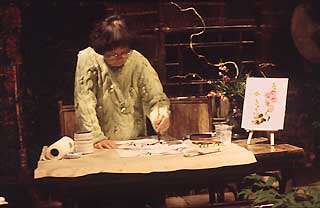
|
Designed and fabricated in Seattle’s sister city, Chongqing, China, the Pavilion was assembled here by a team of Chinese artisans. Guided tours, held every Saturday at 1:00 p.m. throughout the spring and summer months, have already hosted more than 2,500 visitors. More than 4,000 people have attended our lecture series or one of the cultural events such as Climbing High Day and the Lantern Festival.
Additionally, thousands of people stopped to see the Seattle Chinese Garden’s first display garden at the Northwest Flower and Garden Show this past February. Artisans were an integral part of the display garden, demonstrating a wide array of Chinese cultural arts such as calligraphy, stone carving, bamboo weaving and ink painting.
The Seattle Chinese Garden is a Sichuan-style garden, very different from Portland and Vancouver’s Suzhou gardens. While a Suzhou garden is typically a small, urban garden, a Sichuan-style garden is larger and more rustic. Sichuan-style gardens are often built on hills and are able to “borrow the scenery” from the distance to make the garden seem even larger.
When complete, the Seattle Chinese Garden will have views of the Seattle skyline, Cascades, Olympics and from the top of the three-story Floating Clouds Pavilion, Mount Rainier.
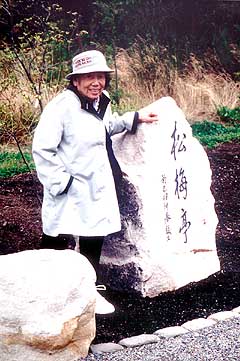
|
The Duwamish Greenbelt surrounds the site on two sides, and although only ten minutes from downtown Seattle, the area feels like a country property.
Whether it’s t’ai chi at dawn or kite-flying at noon, the Seattle Chinese Garden is meant to serve individuals in the community and beyond. As the only Sichuan-style garden outside of China, it will be a destination for garden enthusiasts around the country. Closer to home, it will become an educational resource for students on the South Seattle Community College campus.
Already a new Asian studies curriculum is in the planning stages, with the garden as its focal point. Vocational students of the established environmental horticulture program will have the Chinese Garden as a research and propagation resource and as an inspiration for new approaches to garden design.
The Seattle Chinese Garden will be a complex interweaving of rock, water, architecture and plants. All the plants will be native to China and Taiwan. Extensive groves of bamboo, pine and maples will provide distinct character changes within the garden. Lotus Pond will spill into Mirror Lake through a series of waterfalls. The rock and the water symbolize the basic building blocks of nature, yin and yang, the fundamentals from which life is derived.
Within the garden will be many different pavilions of all styles, including the Floating Clouds Pavilion, the Spring Listening Pavilion by the side of a water cascade, and the Moon-viewing Pavilion on the shore of Mirror Lake.
As we near the completion of fund-raising for Phase I of the Seattle Chinese Garden, the Society has taken special care to ensure that people are the focus.
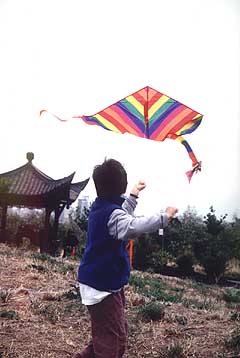
|
Visits to the Suzhou gardens of Dr. Sun Yat-Sen Classical Chinese Garden in Vancouver, B.C. and Portland’s new Classical Chinese Garden have helped us refine our plan to fit the needs of individuals and businesses in the 21st century. Traditional Chinese pavilions are unheated. However, to make the Seattle Chinese Garden accessible 365 days a year, one or more facilities will be heated.
In another exception to tradition, there will be a facility that can handle regular functions, such as family celebrations or business conferences, accommodating between 150 and 200 people. Facilities that do not have this ability are forced to turn away many events. So as not to disrupt the visitor experience, meetings and events will be held in an area that can be closed off from the main garden.
The meeting hall will be equipped to handle events that require media presentations. Traditional Chinese pavilions are not suitable for modern presentations because they have no means for darkening the room.
The Seattle Chinese Garden will have two year-round facilities for visitors. The Tea House, the heart of the Songfeng Courtyard, will overlook Lotus Pond. A destination in itself and the perfect respite after a stroll in the garden, the Tea House will offer light refreshment and host intimate musical performances, small exhibits and poetry readings. The Songfeng Courtyard also includes a ticket office, gift shop, restrooms and storage space.
The South Courtyard will house the elegant Gathering Together Hall, an exciting new space for family celebrations and educational seminars as well as corporate meetings and international conferences. A large kitchen, restrooms and storage space adjoining the hall make the South Courtyard a versatile setting for large, formal events and smaller, informal activities.
The Seattle Chinese Garden is designed to be much more than a gardener’s paradise. It’s a perfect place for a picnic with friends, a destination for out-of-town visitors and a magical setting for family celebrations. It is to be lived in, not just admired.
Phil Wood, of Phil Wood Design, is president of the Seattle Chinese Garden Society. To make a contribution to the Seattle Chinese Garden or for more information, call 206-282-8040.
Other Stories:
- Seattle adapts to life at the top
- Shedding light on the watershed
- Going digital
- New views of sustainable site design from Rainier Vista
- Giving street trees a better chance
- New rules may kill off pesticide use
- LEED and the landscape architect
- Private projects become urban environments
- Inviting nature back to the neighborhood
- New respect for the land drives highway design
- Expanding services in times of slowdown:
Thoughts on surviving and thriving with clients - Keeping history alive
- Common ground
- Designing for the journey
Copyright ©2009 Seattle Daily Journal and DJC.COM.
Comments? Questions? Contact us.